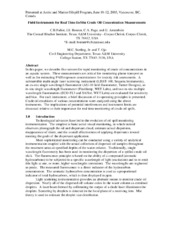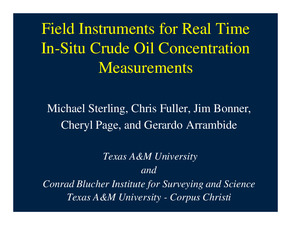| dc.description.abstract | The Texas Water Resources Institute awarded a Mill Scholarship to M.C. Sterling, Jr in 2002. This project describes five sensors for rapid monitoring of crude oil concentrations in an aquatic system. These measurements are critical for monitoring plume transport. They are also useful for estimating polycyclic aromatic hydrocarbons (PAH) exposure concentrations as a component of toxicity risk assessments. A submersible multi-angle laser scattering instrument (LISST-100, Sequoia Instruments), an ex-situ single wavelength fluorometer (AU-10 field fluorometer, Turner Designs), an in-situ single wavelength fluorometer (Flashlamp, WET Labs), and two in-situ multiple wavelength fluorometers (ECO-FL3 and SAFire, WET Labs) are evaluated for sensitivity and bias. For each instrument, a brief discussion of its operating principles is presented. Crude oil emulsions of various concentrations were analyzed using the above instruments. The implications of potential interferences and instrument limits are discussed relative to their importance for real time monitoring of crude oil spills. | en |



